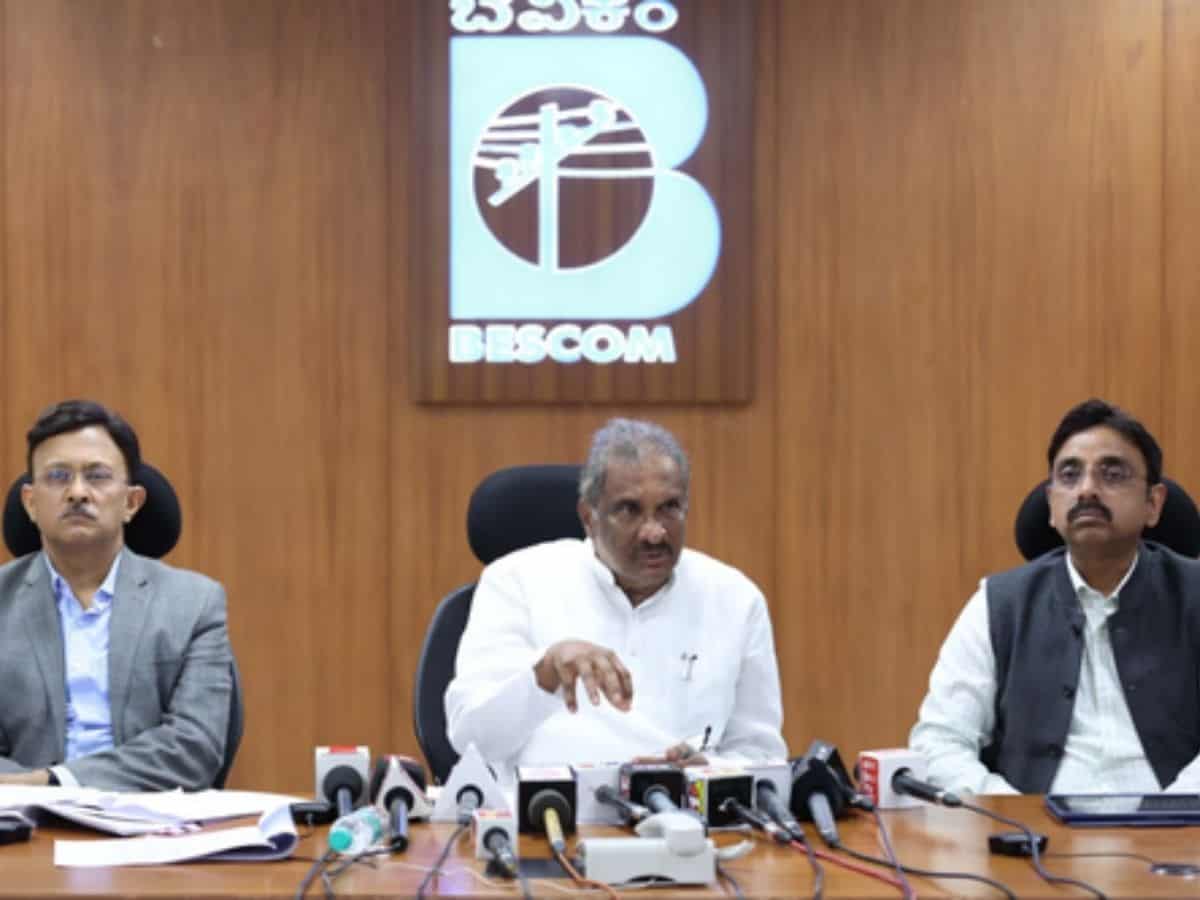
Bengaluru: Recognising the crucial role of electricity in agriculture, Karnataka Energy Minister K.J. George on Monday said that the government is committed to providing five hours of uninterrupted power supply to farmers.
George, after meeting his Department officials, held a press conference on Monday at Belaku Bhavana to detail the government’s efforts to ensure a minimum of five hours of uninterrupted power supply to farmers.
“We are committed to providing 5 hours of uninterrupted power supply to farmers during either daytime or night time on a rotation basis in three shifts. We will be notifying on the shift timings to the farmers through publications, radio, and TV. Presently, our state faces a shortage of 1,500 MW. However, we are leaving no stone unturned to generate more power in the coming months to meet the ever-increasing demand,” he said.
Action will be taken to purchase short-term electricity deficit, taking the approval of the KERC, he added.
The minister said that Section 11 of the Electricity Act has been invoked under national disaster management provisions to procure electricity from power generators in the state and the power shortage would be overcome.
“The demand for power has increased significantly due to a severe drought situation in Karnataka. But the government is trying to meet the increasing demand by purchasing power from both inside and outside the state. An order has been issued asking those generating power in the state to supply it to the government.
“The deficit is attributed to natural calamities, including drought, a shortfall in wind energy, and cloud cover. Nevertheless, we have effectively managed this situation by procuring power from the grid. We have taken significant steps, by identifying 400 substations, out of which 230 are in progress. We are on track to procure power from KUDAGI by December 1, and we have also established a barter system with Punjab and UP,” he added.
From April 23 to October 15, 1,627 M.U. of Electricity amounting to Rs 1,102 crore has been purchased, and similarly, during the same period, a total of 636 MU of electricity has been sold through IEX.
“It is essential to debunk the misconception that Karnataka is in darkness. Soon, we are planning to expand the Pavagada Solar Park from its current capacity of 2,300 MW to adding another 2,000 MW in 10,000 acres. We are also actively working on expanding solar power generation in Gadag and Gulbarga. These initiatives are a testament to our deliberate actions in this direction,” George said.
He said that they are also striving to implement KUSUM B and KUSUM C initiatives aimed at promoting the use of solar energy among farmers. KUSUM B is primarily geared towards incentivising the adoption of stand-alone solar pumpsets by individual farmers availing 80 per cent subsidy. These power plants can be established on agricultural land or barren land, providing an additional source of income for farmers through land leasing.
He also laid emphasis on KUSUM – C that involves the installation of solar power plants at substations, as well as on government land, agricultural land or barren land, providing an additional source of income for farmers through land leasing to ensure a continuous and sustainable power supply to agricultural consumers.
“During the recent visit, the Union Energy Minister himself said that the demand for electricity has increased not only in the state but also in the entire country. High demand has been recorded in the month of August itself as against during summer. The demand for electricity has increased due to the failure of the monsoon. Due to natural calamities, the production of wind and solar energy has also slowed down. Due to this, there has been a deficit of electricity for a few days,” George said.
The minister said that blaming the opposition is not his way. “However, due to natural calamities, there is now a power shortage. It is wrong to use this for political gain and say that Karnataka is in darkness,” he said, asking the opposition to have a constructive dialogue with him to address these challenges to move forward towards a brighter energy future for the state.
